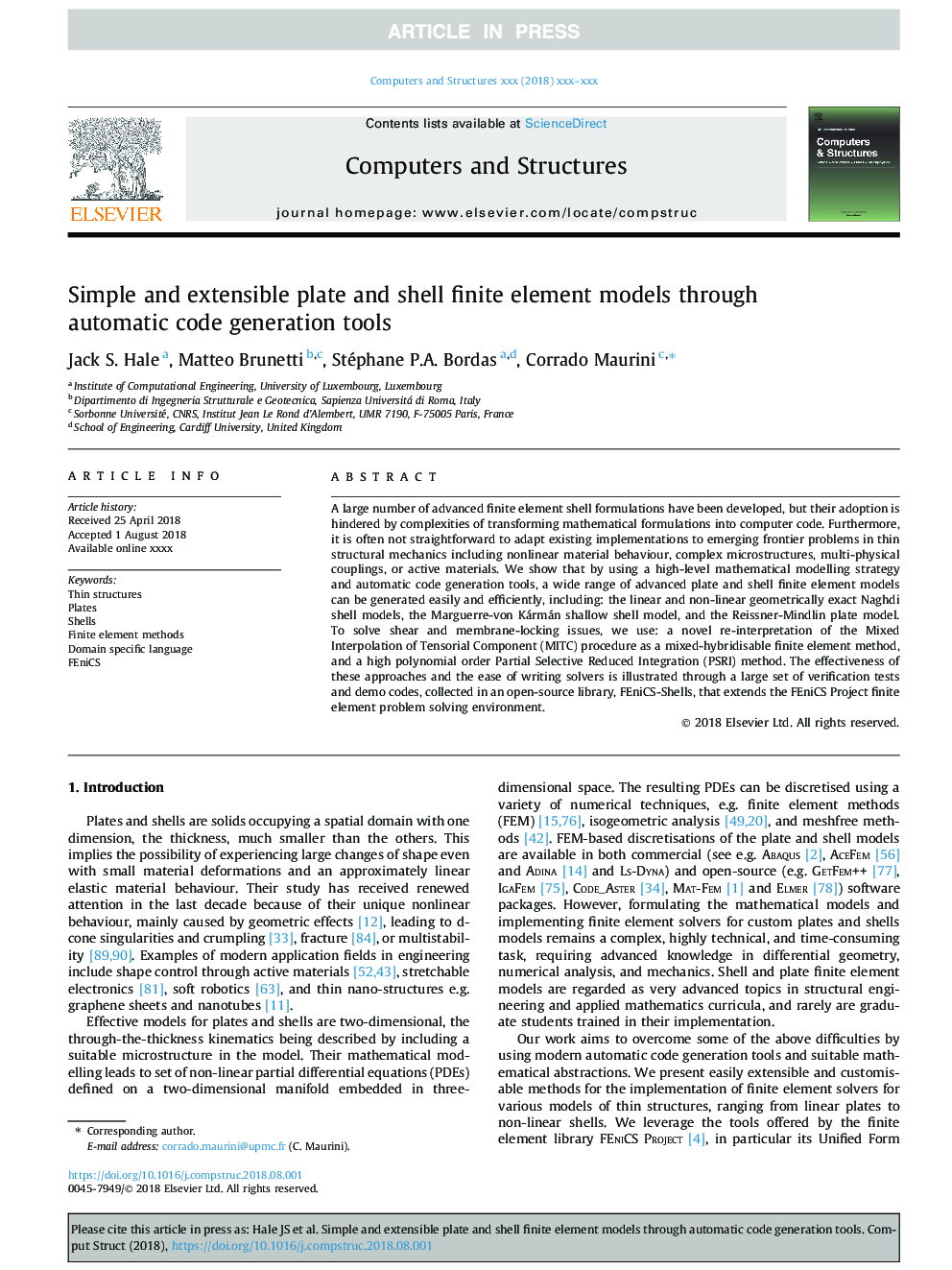| Article ID | Journal | Published Year | Pages | File Type |
|---|---|---|---|---|
| 8965209 | Computers & Structures | 2018 | 19 Pages |
Abstract
A large number of advanced finite element shell formulations have been developed, but their adoption is hindered by complexities of transforming mathematical formulations into computer code. Furthermore, it is often not straightforward to adapt existing implementations to emerging frontier problems in thin structural mechanics including nonlinear material behaviour, complex microstructures, multi-physical couplings, or active materials. We show that by using a high-level mathematical modelling strategy and automatic code generation tools, a wide range of advanced plate and shell finite element models can be generated easily and efficiently, including: the linear and non-linear geometrically exact Naghdi shell models, the Marguerre-von Kármán shallow shell model, and the Reissner-Mindlin plate model. To solve shear and membrane-locking issues, we use: a novel re-interpretation of the Mixed Interpolation of Tensorial Component (MITC) procedure as a mixed-hybridisable finite element method, and a high polynomial order Partial Selective Reduced Integration (PSRI) method. The effectiveness of these approaches and the ease of writing solvers is illustrated through a large set of verification tests and demo codes, collected in an open-source library, FEniCS-Shells, that extends the FEniCS Project finite element problem solving environment.
Related Topics
Physical Sciences and Engineering
Computer Science
Computer Science Applications
Authors
Jack S. Hale, Matteo Brunetti, Stéphane P.A. Bordas, Corrado Maurini,
